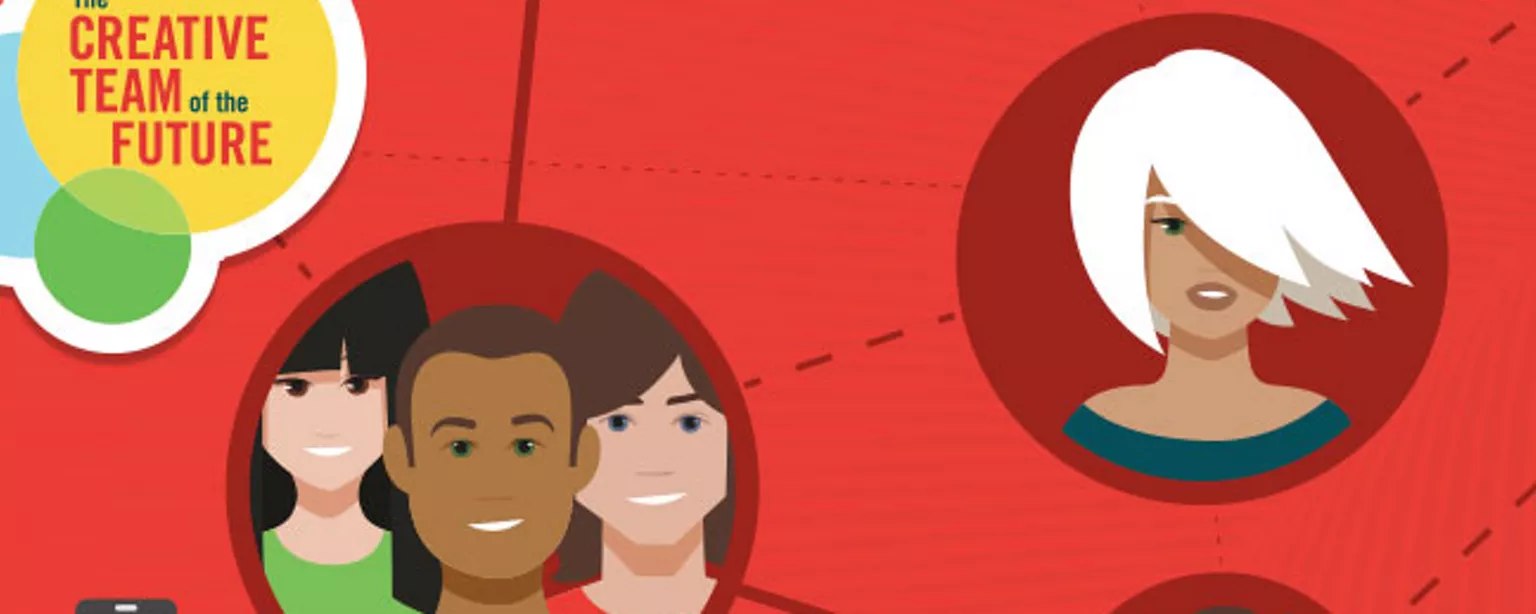Smooth collaboration in the workplace. That’s the goal for in-house creative professionals as they tackle increasingly complex projects that require partnering with peers across the organization.
“Stop, collaborate and listen.” That’s the tune in-house creative teams are singing, according to new research for the Creative Team of the Future program. Each year, The Creative Group teams up with AIGA to find out what trends will impact creative teams in the near future. As part of the research, we surveyed more than 800 in-house design professionals and interviewed creative veterans from leading organizations to get their take on the state of the industry and where it’s headed.
One theme stood out loud and clear: the need for creative teams to collaborate with other departments — especially information technology — in order to maximize efforts, improve efficiencies and achieve the best results for the business.
But working with colleagues in other departments is often easier said than done, especially when teams are accustomed to operating in silos.
How to fix challenges with collaboration in the workplace
To help you build stronger cross-departmental relationships, we’ve collected actionable tips for overcoming the most common collaboration hurdles. The full findings are detailed in a new report, Collaboration in the Workplace: How to Overcome 7 Common Challenges. Here’s a glimpse:
1. Poor communication is crippling productivity
Not surprisingly, this common workplace struggle came up time after time in our research. Carlos Estrada, an information design consultant for Herman Miller, shared his approach to opening the lines of communication: “At Herman Miller, we’re all coming from completely different backgrounds, perspectives and career levels. When meeting with colleagues in different departments, I’m learning to put myself in other people’s shoes, find a common language, and ask the right questions to ensure we’re all on the same page.”
2. Making decisions is an uphill battle
It’s difficult to move a project forward when you’re not empowered to call the shots — or unaware of who can. Ideally, a senior-level manager on each team will have the final say. If that’s not the case, the ranking team members or project manager should establish who has the authority to makes decisions at the start of an initiative.
3. No one has time to meet
We’re all busy. Too busy. But if you don’t make time to convene at the outset of projects, you’re doing yourself and your team a big disservice. The key to solving this pervasive problem is planning kickoff and touch-base meetings strategically. Ed Roberts, creative lead at ElectriCities, finds tremendous value in gathering the entire project team to discuss milestones at the get-go. “With a documented plan, everyone instinctively holds each other accountable, cutting down on the number of large group meetings. Door-jam meetings or huddles with one or two project contributors at key points in the project life cycle eliminate the daunting task of syncing the entire team’s individual calendars,” Roberts explained.






